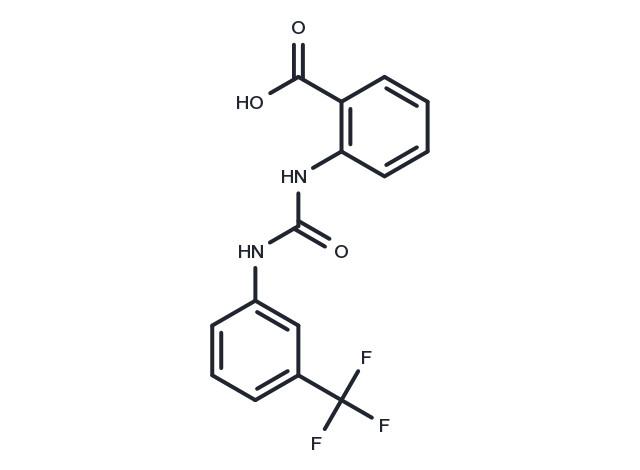Powder: -20°C for 3 years | In solvent: -80°C for 1 year


NS1652 is an anion conductance inhibitor. NS1652 blocks chloride channel has an IC50 of 1.6 μM in human and mouse red blood cells.

| Pack Size | Availability | Price/USD | Quantity |
|---|---|---|---|
| 1 mg | In stock | $ 80.00 | |
| 5 mg | In stock | $ 178.00 | |
| 10 mg | In stock | $ 288.00 | |
| 25 mg | In stock | $ 539.00 | |
| 50 mg | In stock | $ 778.00 | |
| 100 mg | In stock | $ 1,060.00 | |
| 500 mg | In stock | $ 2,120.00 |


| Description | NS1652 is an anion conductance inhibitor. NS1652 blocks chloride channel has an IC50 of 1.6 μM in human and mouse red blood cells. |
| Targets&IC50 | Cl- channel (human and mouse red blood cells):1.6 μM (IC50) |
| In vitro | NS1652 (20 μM) fully and reversibly inhibits the red cell Cl-conductance. NS1652 effectively inhibits the chloride conductance (IC50, 1.6 μM) in human and mouse red blood cells, but only weakly inhibits VRAC (IC50, 125 μM) in HEK293 cells. NS1652 markedly blocks the NO production (IC50: 3.1 μM in BV2 cells). NS1652 also down-regulates iNOS expression at 3 μM and fully abolishes at 10 μM in BV2 cells. NS1652 (0, 1.0, 3.3, 10, and 20 μM) induces increasing hyperpolarization due to inhibition of the chloride conductance in normal erythrocytes. NS1652 lowers the net KCl loss from deoxygenated sickle cells from about 12 mM cells/h to about 4 mM cells/h [1][2]. |
| In vivo | In mice, NS1652 (50 mg/kg, i.v.) blocks murine erythrocyte Cl- conductance by >90%[2]. |
| Molecular Weight | 324.25 |
| Formula | C15H11F3N2O3 |
| CAS No. | 1566-81-0 |
Powder: -20°C for 3 years | In solvent: -80°C for 1 year
DMSO: 4.9 mg/mL (15.11 mM), Sonification is recommended.
You can also refer to dose conversion for different animals. More
bottom
Please see Inhibitor Handling Instructions for more frequently ask questions. Topics include: how to prepare stock solutions, how to store products, and cautions on cell-based assays & animal experiments, etc.
NS1652 1566-81-0 Membrane transporter/Ion channel Chloride channel Cl? Channels inhibit Inhibitor Chloride Channel NS 1652 NS-1652 inhibitor
